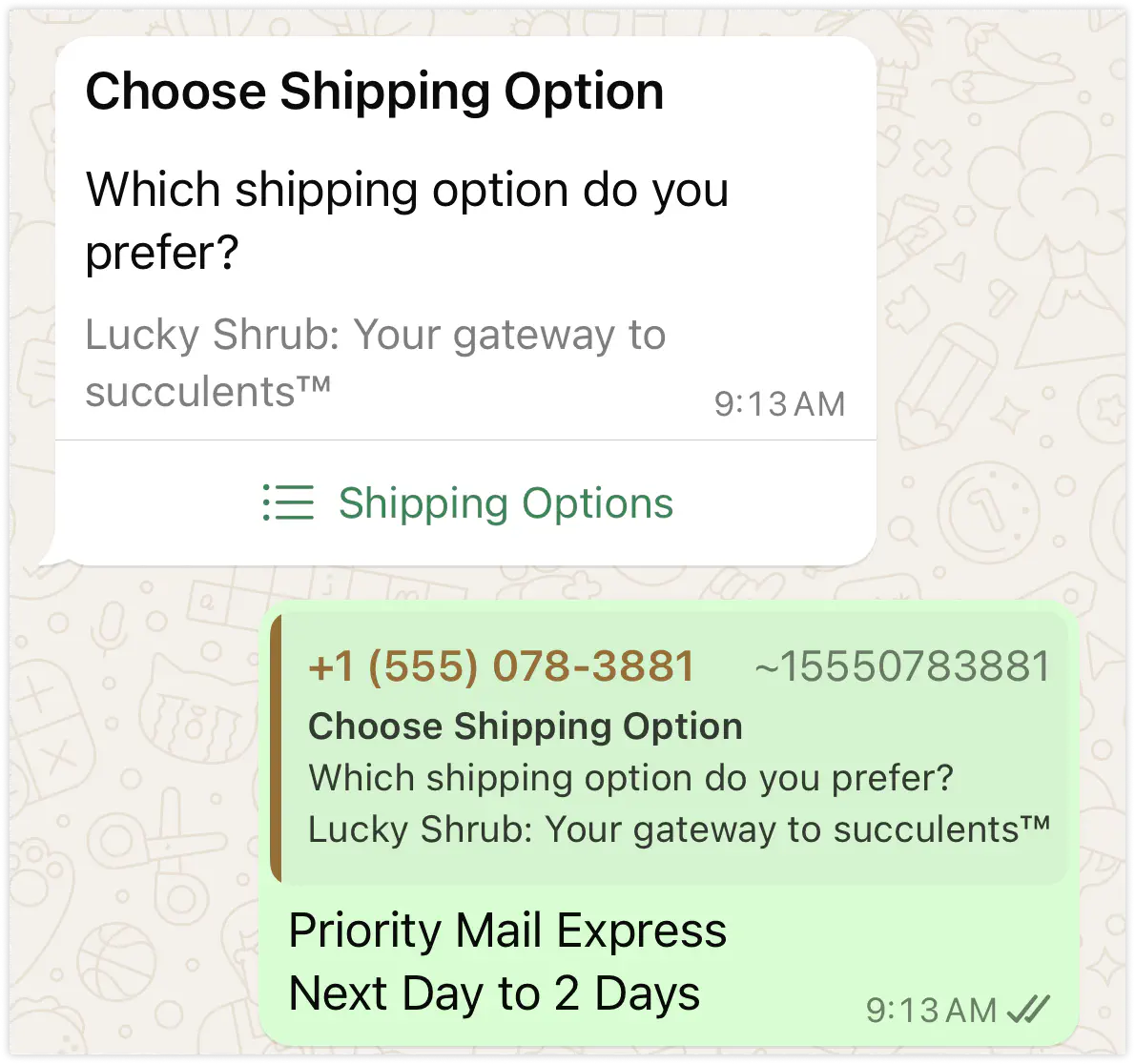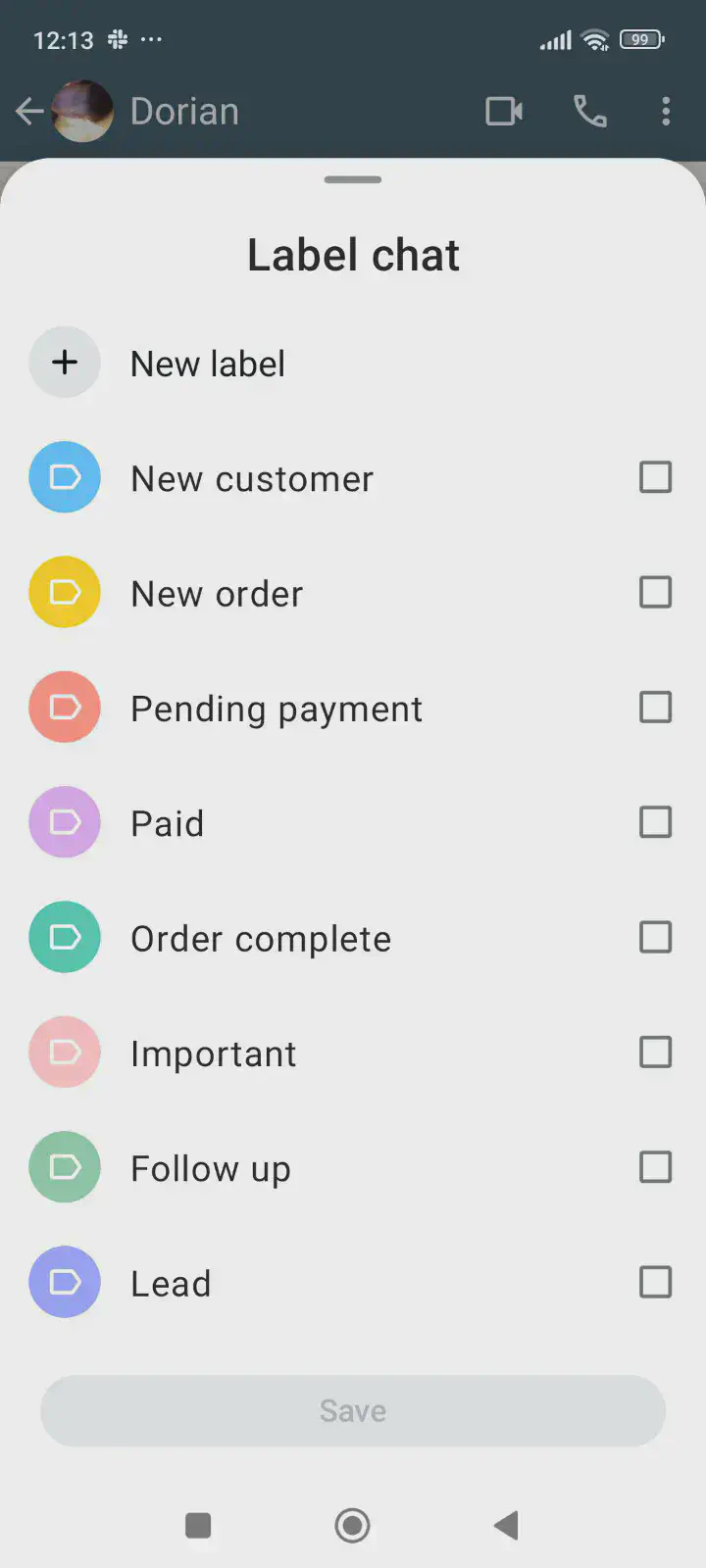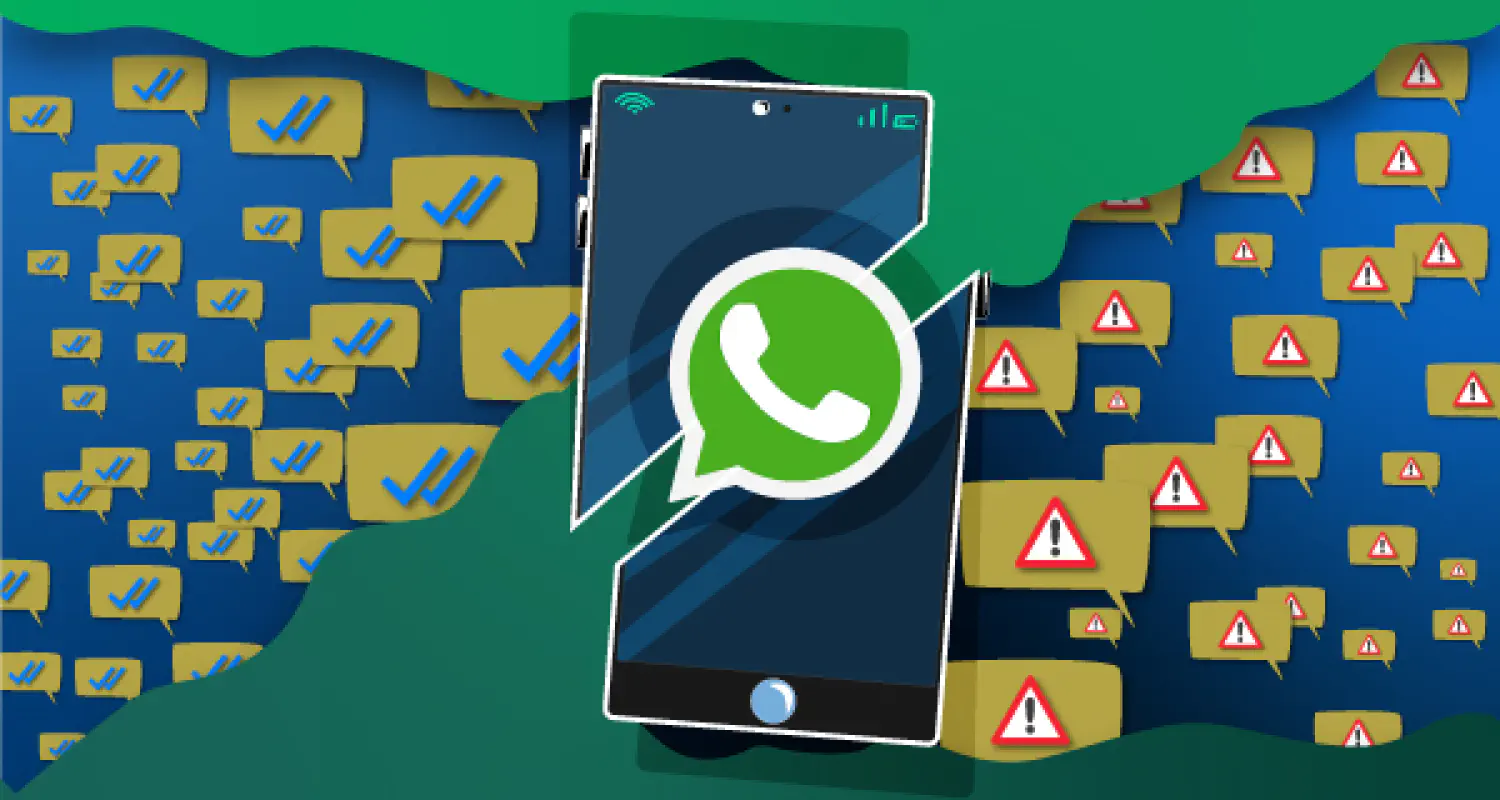How to Send Personalized Product Recommendations on WhatsApp

Ever get a WhatsApp message trying to sell you something you don’t need, didn’t ask for, and would never buy? A lot of people have been there. Most product recommendations on WhatsApp feel like spam, and most of the times, it prompts customers to ignore the message.
The right move is using WhatsApp to send personalized product recommendations that feel like they were written for your customer. That means sending the right message to the right person at the right time, based on what they’ve browsed, bought, or asked about.
In this guide, we’ll show you how to send targeted recommendations on WhatsApp without coming across as pushy.
What makes a good product recommendation on WhatsApp?
A good product recommendation on WhatsApp should feel like advice from someone who understands the customer and the product.
Instead of sending generic messages, you should focus on timing, relevance, and customizing your recommendations to the specific pains of your customers.
Here’s what you need to do:
- Base it on real behavior or context: Recommend products or features the customer has shown interest in, like pages they visited, tools they’ve tried, or features they haven’t activated yet.
- Pick the right moment: The best times to send recommendations are right after onboarding, when the customer reaches a usage limit, when they hit a success milestone, or after they’ve gone quiet for a while.
- Personalize with specifics: Include details like their company name, plan tier, location, role, or recent usage.
- Keep it short and actionable: Keep your messages clear and concise, add a question to prompt a response, and include a quick-action button or link to learn more.
- Make it feel like part of a conversation: Avoid sounding like a bot. Use natural language, ask open-ended questions, and be ready to follow up.
Types of product recommendations that work well
To get the best results on WhatsApp, your product recommendations need to be tailored to each user’s context, behavior, and stage in the journey.
Here are the types of WhatsApp product suggestions that tend to convert best, especially in B2B conversations.
Cross-sell
Cross-selling is about recommending a complementary product or feature that adds value to something the customer is already using. It aims to help customers get more out of what they already have.
This works when a customer is using one part of your product, and there’s another feature or module that complements it. The key is to tie the suggestion to something they’re already doing.
Example:
A sales team is actively using your HR software. You notice they haven’t tried the performance review module. You send:
“Hey [Name], since your team is already managing attendance and leave in [Product Name], you might want to check out the performance review module. It helps improve employee evaluations and saves hours of back-and-forth.”
Other cross-sell ideas:
- Suggest email marketing tools to customers already using your CRM
- Recommend advanced analytics to users tracking basic KPIs
- Promoting live support handover tools to customers using bots
Upsell
Upselling is about guiding a customer toward a higher-tier plan, more capacity, or premium features, before they hit friction. The best upsell recommendations on WhatsApp feel proactive, not salesy.
Upsell messages work when a customer is close to outgrowing their current plan or setup. Instead of waiting for them to hit a blocker, you offer a path forward.
Example:
A company is on your basic plan and just added their fourth agent, the max allowed. You send:
“Hi [Name], I saw you’ve added a fourth user. If you’re planning to add more agents or want access to campaign reports, our Growth plan might be a better fit. Want me to send you the details?”
Other upsell moments:
- Customer hits a monthly usage limit
- Team asks for a feature only available on higher tiers
- Company starts scaling across multiple departments
How to send product recommendations on WhatsApp
WhatsApp is a personal space. If you’re sending product recommendations there, you need to respect the format and make the message easy to interact with. Here’s how to do it properly.
1. Showcase the right products at the right time
The best moments to showcase your products are when the customer is already thinking about progress or hitting a limit.
For example: right after onboarding, when they’re exploring what your product can do. Or when they reach a usage cap and need more capacity. It could also be when they ask about a use case you know your product solves well.
Here, you can use WhatsApp to send messages that highlight plans, add-ons, or feature modules that make sense for where the customer is.
On top of that, you can pair your message with a WhatsApp product catalog to send a clean, clickable card that visually showcases what you’re offering. It’s much more engaging than just dropping a plain link.
2. Enable customers to take action
A good product recommendation makes it easy for the customer to do something next. Ideally, it should take just one tap to follow up.
Use call-to-action buttons like “See how it works”, “Talk to support”, or “Upgrade now” to guide customers toward the next step without confusion.
Buttons feel natural on WhatsApp and keep the interaction smooth and quick so that the customer doesn’t need to type or go digging for more info.
If you’re offering multiple options, such as pricing plans, consider using list messages. These allow customers to browse several options in a structured format.

3. Personalize recommendations based on customer data
You should use the data you have to make relevant recommendations to your customers.
Start by using the basics: plan type, support chat history, product usage trends, or CRM tags. Even small personal touches can turn a generic product recommendation into something that feels tailored and thoughtful.
You can also use labels on the WhatsApp Business App to group customers by lifecycle stage, interest, or product area.
Other WhatsApp Business features like quick replies make it easier to send helpful messages at scale, while still making them feel personal.

For example, if a customer is tagged as “Self-service,” you might send:
“Teams like yours often add our onboarding module to speed up setup. Want to see if it fits?”
This feels more like a tip than a pitch.
4. Stay compliant with opt-ins
Only send product recommendations to people who’ve clearly agreed to hear from you. Just because someone is a customer doesn’t mean they’ve opted in to receive WhatsApp messages.
If you’re using the WhatsApp Business App for customer communication, your ability to reach users at scale is limited. Broadcasts with labels are the only way to send messages to multiple contacts, but the WhatsApp Business App has major limitations compared to the WhatsApp Business API. Use broadcasts sparingly, and always respect the context.
As for tone, keep it light and conversational. Messages like “Want to check this out?” or “This might be useful for your team” invite a response without putting pressure on the customer.
Product recommendation message templates you can steal
These ready-to-use WhatsApp message templates are designed to help you send relevant, timely product recommendations that spark engagement. Use them as a starting point and be sure to adjust the tone, content, and details to fit your product, audience, and use case.
Cross-sell templates
“Hi [First Name], I saw your team has been using [Feature A] regularly. A lot of teams in your space also use [Feature B] to [specific benefit]. Want to see how it could fit into your workflow?”
“Hey [First Name], I saw your team just launched your first campaign. A lot of teams find [Feature B] helpful at this stage. It lets you [specific benefit]. Want to take a look?”
“Hi [First Name], since you’re using [Feature A] to manage daily tasks, you might find [Feature B] useful for tracking team performance. Want to try it out?”
Upsell templates
“Hey [First Name], looks like you’re getting close to the limit on your current plan. Our [Plan Name] includes [key upgrade benefit] and might be a better fit as your team grows. Want me to send more info?”
“Hi [First Name], looks like your usage is growing fast. Our [Plan Name] includes more capacity and access to [Feature X], which might suit your current setup better. Want the details?”
“Hey [First Name], your team is getting close to the limit on [Feature A]. Upgrading to [Plan Name] will give you more room to grow and unlock advanced features like [Feature B] and [Feature C]. Want me to show you how it works?”
Why use WhatsApp Business Platform for product recommendations
The WhatsApp Business Platform gives you more flexibility than the app. It integrates with your CRM, so you can send recommendations based on real data, such as plan type, usage patterns, or customer actions.
On top of that, you can trigger messages when something actually happens. For example, when a customer finishes onboarding, hits a usage limit, or asks about a feature, you can set up an automation to send a relevant suggestion right away.
It also helps your team stay organized. Conversations can be assigned to the right person, tracked, and followed up on automatically. That way, each recommendation is personal and sent at the right time, even when your team is working at scale.
Conclusion
The best product recommendations feel natural and helpful. On WhatsApp, that means keeping things short, specific, and based on what the customer actually needs.
Here’s what to keep in mind:
- Recommend features, plans, or add-ons that fit the customer’s current setup
- Look for key moments, like after onboarding or when usage changes
- Use product messages, buttons, and quick replies to guide action
- Personalize using simple details
- Only message customers who’ve opted in, and keep the tone friendly
WhatsApp gives you the perfect channel to make these messages feel personal. Just don’t treat it like another email blast.
Book a session with our team

Hania is a seasoned researcher and content writer specializing in WhatsApp Business and its role in B2B sales and customer engagement. With years of experience creating in-depth, thought-provoking content, she combines real-life use cases and deep industry insights to help businesses leverage WhatsApp as a growth tool. Her expertise lies in translating complex research into actionable strategies, making her a trusted resource for companies looking to innovate their communication and sales processes.




